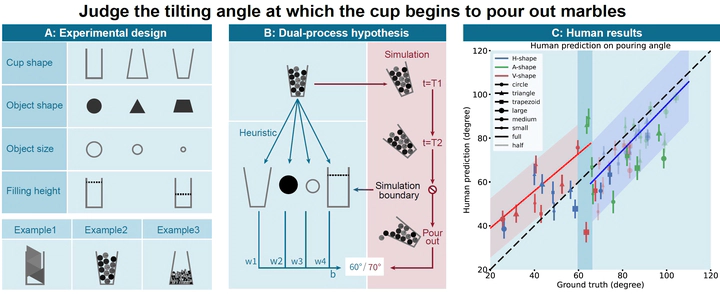[CogSci25] A simulation-heuristics dual-process model for intuitive physics

Abstract
The role of mental simulation in human physical reasoning is widely acknowledged, but whether it is employed across scenarios with varying simulation costs and where its boundary lies remains unclear. Using a pouring-marble task, our human study revealed two distinct error patterns when predicting pouring angles, differentiated by simulation time. While mental simulation accurately captured human judgments in simpler scenarios, a linear heuristic model better matched human predictions when simulation time exceeded a certain boundary. Motivated by these observations, we propose a dual-process framework, Simulation-Heuristics Model (SHM), where intuitive physics employs simulation for short-time simulation but switches to heuristics when simulation becomes costly. By integrating computational methods previously viewed as separate into a unified model, SHM quantitatively captures their switching mechanism. The SHM aligns more precisely with human behavior and demonstrates consistent predictive performance across diverse scenarios, advancing our understanding of the adaptive nature of intuitive physical reasoning.